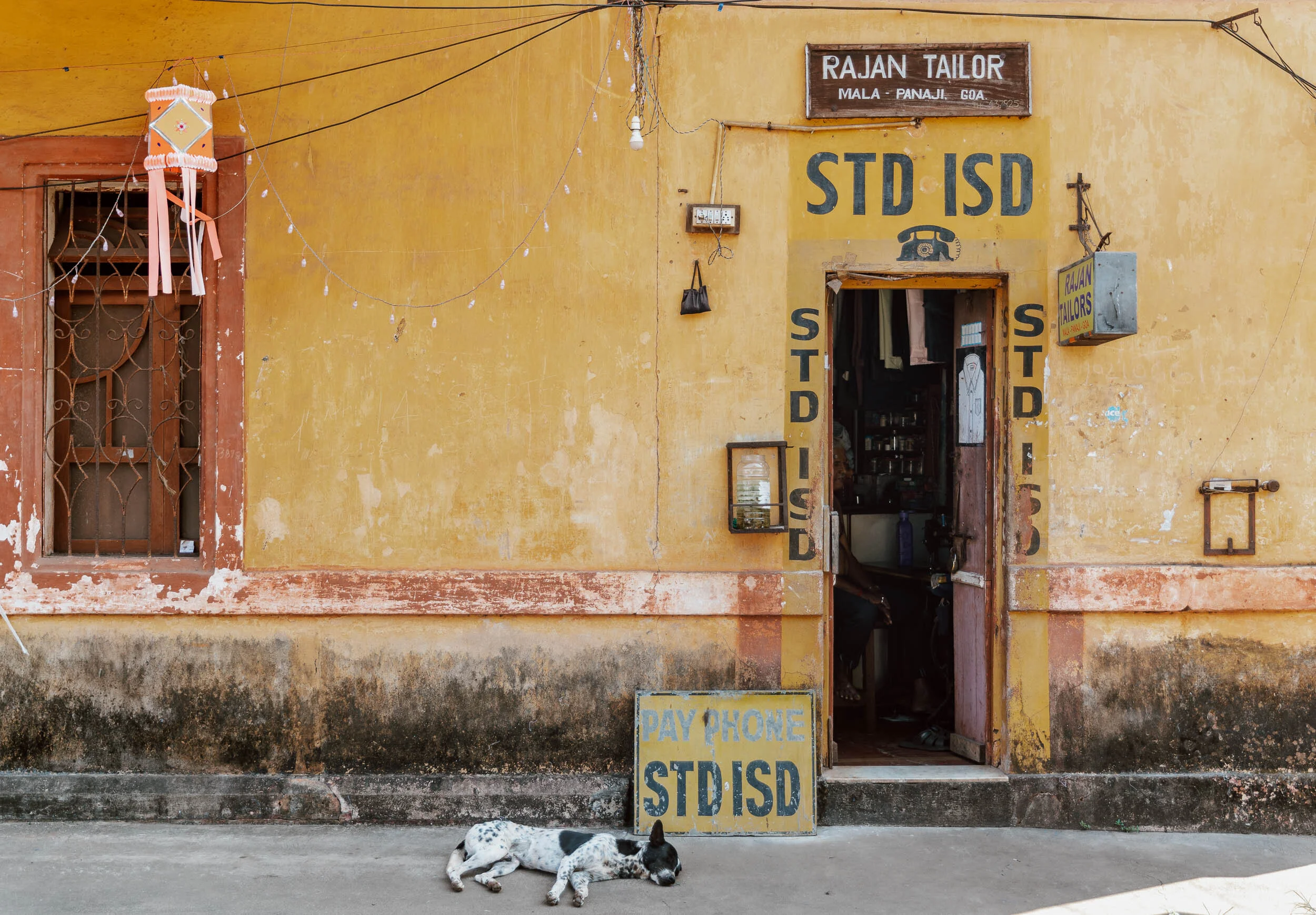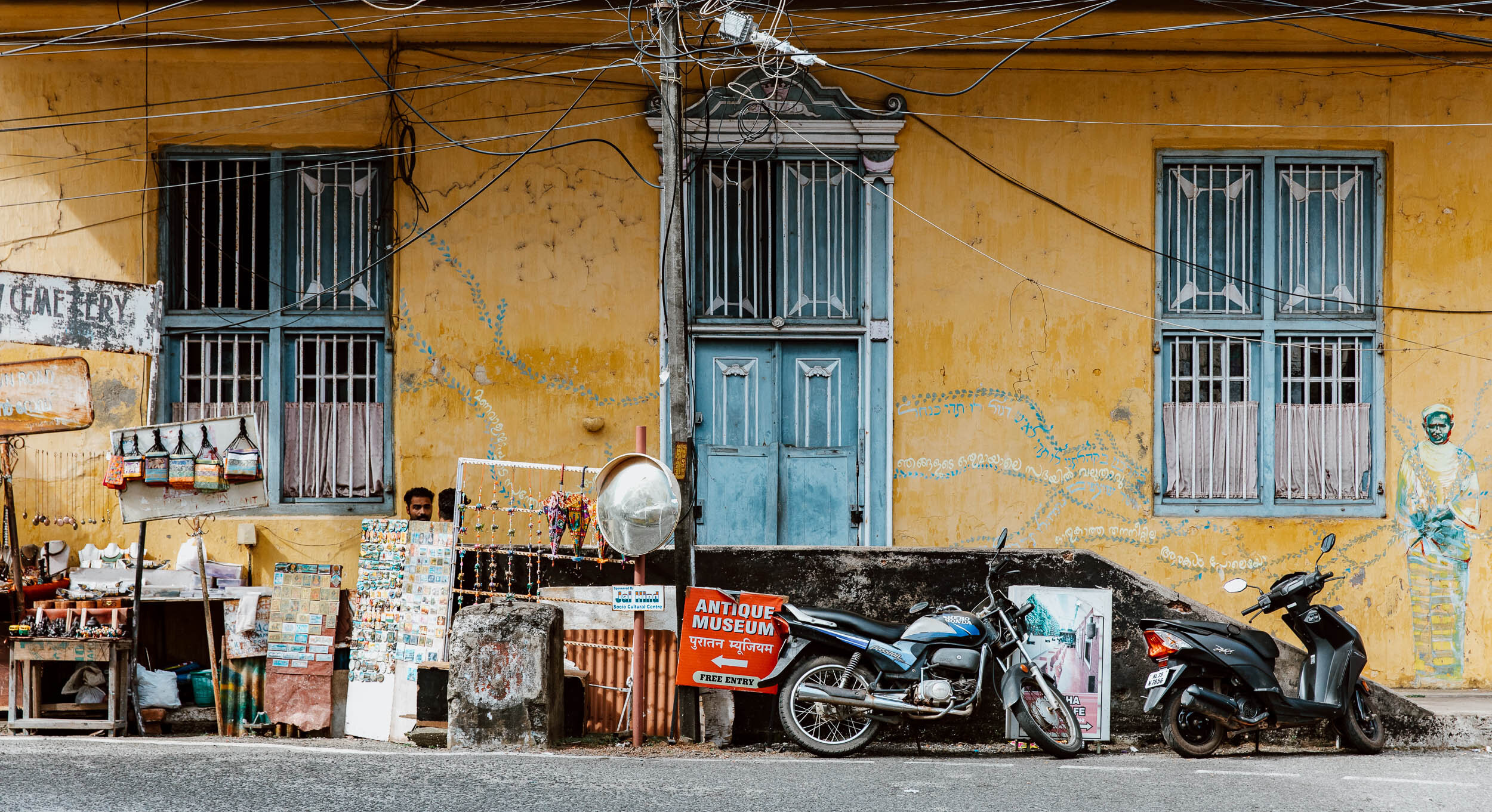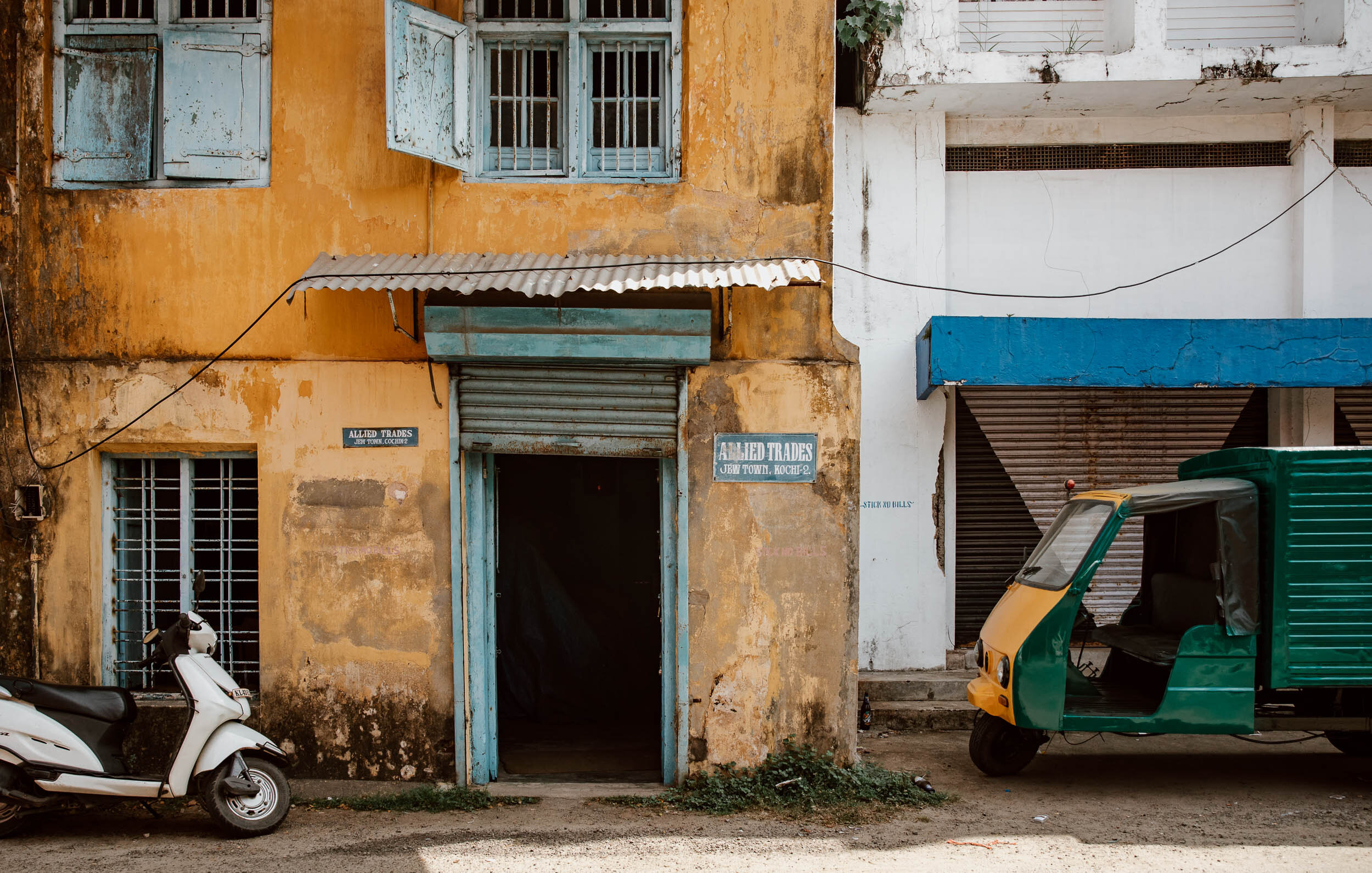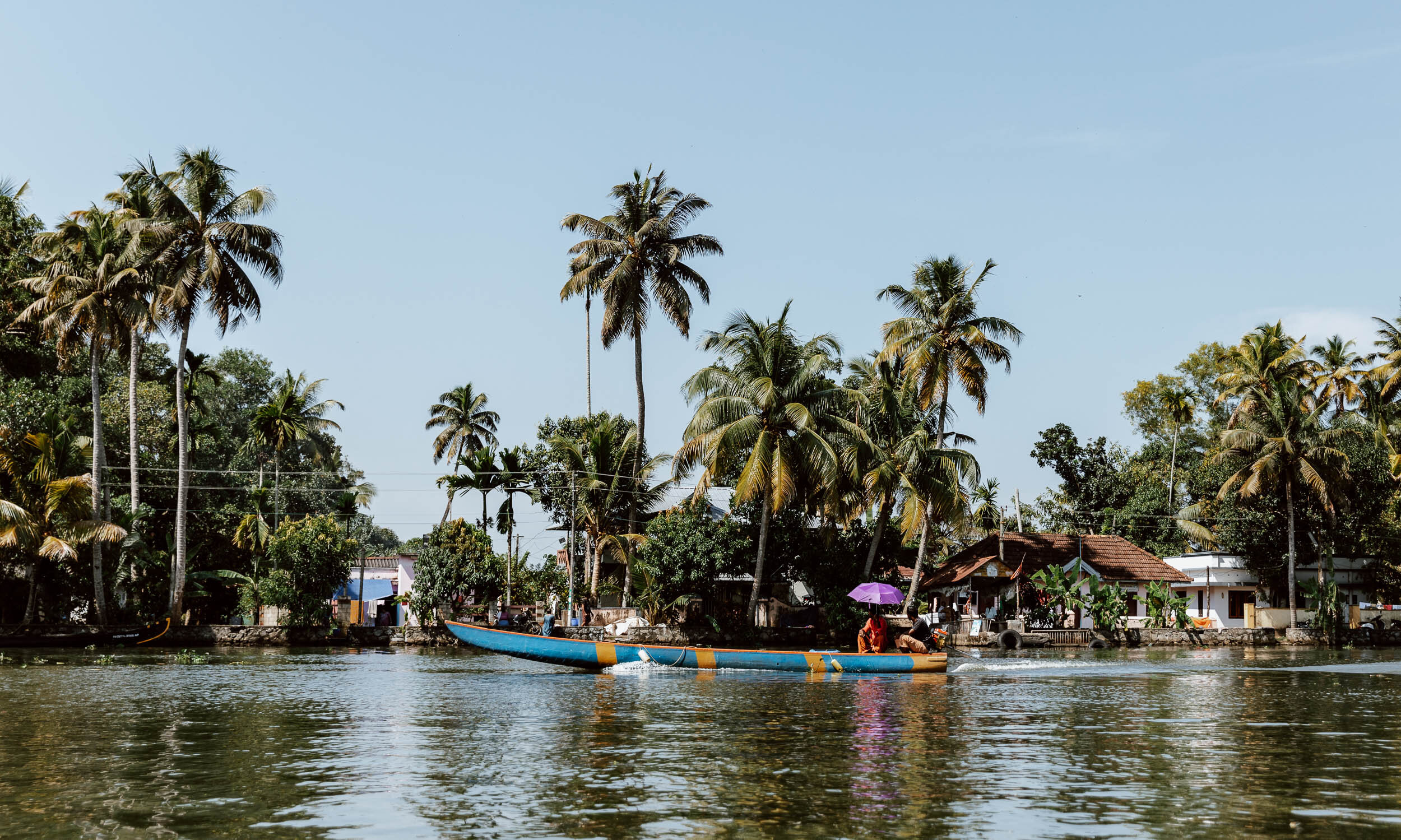If you're heading to India for a backpacking adventure or simply to indulge in a couple of weeks of curry, culture, and chaotic traffic, you will need to apply for the Indian e-Visa before you travel.
Launched by the Indian government in 2014, this Indian visa online system removed the paperwork and hassle associated with the previous application process. Now nearly every traveller can independently apply and pay for their Indian visa online in advance, and receive their approval paperwork before arriving at the immigration desk in India (for the avoidance of doubt, you cannot apply or pay for your Indian e-visa or Indian tourist visa in person at the airport or get your India tourist visa on arrival)
Despite these positive developments, there remain several important things to know and avoid before you begin the India e-visa application process.
After our own experience of applying and paying for the e-visa online before our month-long trip through Kerala & Goa, we created this guide so that travellers like you can fully understand the application process and costs in advance, know exactly where and how to apply for the Indian e-visa so you can avoid the numerous scam websites trying to dupe you, avoid several common errors made with the application form, and ensure all your paperwork is in order before you arrive at Indian immigration and start your adventure.
Here’s everything travellers really need to know before applying for your India E-Visa.
Do not use a scam website to apply for the e-Visa
This section was initially towards the end of the article, but after speaking with one of these scam companies ourselves, it became clear that this is the very first thing you guys need to know.
If you do a quick Google for information on the Indian e-Visa, you will find many websites only too happy to do the application process on your behalf. They'll have the name and appearance of a website which looks quite official, and maybe even have 'visa' in the title. They will offer to take care of the complicated and complex visa process on your behalf, including the payment.
However, these websites are NOT the official website for the Indian e-visa application and you should never, ever use them. Some of them are scams and some of them are legit but nefarious, but they all have the intention of making you think that the best, the official, or the only way to apply for your e-tourist visa is with them.
That. Is. Not. True.
In order to confirm this, we have spoken on the phone with VFS Global to ask what we needed to do if we wanted an Indian tourist visa. We were told that it would cost us £124 for the visa, including service fees, and the only way to apply for it was by taking our paperwork to one of their UK offices.
That is an outright lie; we applied independently, online, for our Indian visas, paying less £20 each.
Unfortunately, fake visa application websites are rife, and their sole aim is to hoodwink travellers into paying inflated fees or additional charges for them to do the simple application on their behalf, or to simply take your money for nothing. As bloggers, we actually receive numerous requests from companies like this looking to pay us to put a link on our own website so that they can appear on page one of Google.
We always refuse these as a point of principle however we were genuinely shocked and appalled at how several established travel blogs have clearly written articles sponsored by these companies without declaring that relationship, and without giving their readers the full and accurate picture about the visa application process and costs.
So, whatever you do, please only use the official Government of India e-visa website to apply and pay for your Indian e-visa - and ignore any other website or blog telling you to otherwise.
Who Can Apply for the Indian E-Visa?
Whether arriving for work or pleasure, a few weeks or a few months, pretty much every nationality (with the exception of those from Nepal or Bhutan) travelling to India will require one of several e-visas.
For travellers, you’ll need the specific Indian e-tourist visa, which is available to citizens of 160+ countries. It is only available if your trip to India is for the following reasons:
"recreation, sight seeing, casual visit to meet friends and relatives".
"Attending a short term yoga programme, short term courses on local languages, music, dance, arts & crafts, cooking, medicine etc. which should not be a formal or structured course/programme (courses not exceeding 6 months duration and not issued with a qualifying certificate/ diploma etc)
"Voluntary work of short duration (for a maximum period of one month, which does not involve any monetary payment or consideration of any kind in return)
There are other categories of the Indian e-visa, including the e-business Visa, e-Conference Visa, and e-Medical Visa. All of the information within this article is relevant to those categories too, but our focus is on the Indian e-tourist visa application process and requirements for backpackers and tourists.
If you want to double-check whether your eligibility for any category of e-visa, you can view the comprehensive list of eligible countries on the official government website here.
For travellers of Pakistani origin or with Pakistani parents / grandparents, please note that you may not be eligible for the e-visa (regardless of whether you area citizen and passport holder of a different country) and will likely need to apply via a different visa process; we recommend that you check your own government’s foreign travel advice website. for more information on requirements.
How long does the Indian e-visa last & cost?
There are three options for travellers:
30 day eTourist visa | valid for 30 days from your date of first arrival in India, which allows two entries.
1 year eTourist visa | valid for 365 days from the date the visa is granted, with multiple entries allowed.
5 year eTourist visa | valid for 5 years from the date the visa is granted, with multiple entries allowed.
For the 1 year and 5 year options, each visit (or continuous stay) should not exceed 90 days for most countries. Citizens of the UK, US, Canada, and Japan are currently allowed continuous stays up to 180 days (but double check this before your own visit).
If you are applying for the 30-day Indian e-tourist visa, remember to actually count the number of days this will give you (rather than guessing - 30 days does not mean the date you apply but one month later!) when booking your flights to ensure that your return flight is for one day after your visa expires! The e-visa is not-extendable.
In terms of costs, it varies depending upon your nationality and the time of year you're travelling. For example, for travel dates in April - June the 30 day visas for UK travellers are $10 USD, whilst for travel in July - March it's $25 USD (the government uses USD rather than rupees for the visas). The 1 year visa is $40 USD, whilst the 5 year is $80 USD.
There are 20 or so countries which are not required to pay anything for visas, and the official price list for the 30 day, 1 year, and 5 year visas can be viewed here.
Check Your itinerary + passport before applying
The Indian e-visa programme is only valid for entry at 28 designated airports (correct at time of writing in January 2020):
Trichy
Varanasi
Calicut
Mangalore
Pune
Nagpur
Coimbatore
Bagdogra
Guwahati
Chandigarh
Visakhapatnam
Madurai
Bhubaneswar
Port Blair
Delhi
Mumbai
Chennai
Kolkata Thiruvananthapuram
Bengaluru
Hyderabad
Cochin
Goa
Ahmedabad
Amritsar
Gaya
Jaipur
Lucknow
Thankfully, anyone flying into India is very likely to arrive at one of the above, and so this should not present any issues.
If you are a cruise passenger, the e-visa is also valid for entry at the following seaports: Mumbai, Cochin, Mormugao, Chennai, New Mangalore.
As with most visas, your passport needs to have a minimum of six months validity and two blank pages remaining at the time of making the application. You must arrive and travel on the same passport with which you applied for the Visa.
You are also required to have a return ticket or proof of onward travel, and may be asked to show this at immigration. For most of you on short-term trips, this won't be an issue as you'll know exactly when you're coming home and how.
However, from our own experiences of travelling for two years in Latin America, we know that many travellers won't necessarily have a fixed end-date or have purchased a return flight until they're towards the end of their adventure.
One way around this is to use an ‘onward ticket’ company - you find more about this in this article we have previously written.
It is also a stated requirement that travellers must have "sufficient money to spend during the stay in India", but what is 'sufficient' is not defined and our research tells us that this really is not a common request by airport border officials.
Don't Leave it Too Late To Apply For Your Indian visa
If you're reading this and travelling next week, but completely forgot that you need a visa for India, then don't worry!
Applications for the e-tourist visa can be made online a minimum of 4 day in advance of your date of arrival in India - do not leave it any later than that under any circumstances. However, because of common payment and processing issues (see below section), we highly recommend that you do not leave it this late!
If you're a super organised eager beaver, and all your flights and accommodation are already booked up, then you need to know that you cannot apply for the 30 day tourist e-visa more than 30 days before your travel dates.
We applied for our e-Visas the day after we had purchased our flights, four weeks before we were due to arrive in India. However, remember that the cost of a rejected visa is much less than the cost that you'll lose on flights, so if you aren't specifically looking at a really cheap time-sensitive flight deal, it's not the worst idea to apply for the visa first.
How To Apply for your India e-Visa Independently
Now that you understand where and how to apply for the Indian e-visa and the requirements, it's time to start on the practicalities of the actual application.
Although the interface of the official government website looks like it's from a website created in 1999, it's actually pretty easy to follow.
We recommend you start on a desktop or laptop, not mobile due to the website functionality. You'll need the following:
Passport information
Flight + itinerary information
Standard personal + family information
A clear and recent front facing photograph with white background to upload (our advice is to take a photo of same one as your passport or take a new one on your mobile)
A clear picture or scan of the photo page of your passport (the bit with your details)
For volunteering or short-courses, you may be required to upload a copy of the confirmation letter including its letter-head.
Submitting a photo which isn't clear, doesn't include a white background, or where your face is obscured is likely to be the main cause of delays or rejections - therefore make certain that you're uploading a photo which fully meets the requirements. The cost of a failed or rejected eVisa to India application is not refundable, so you don't want to get it wrong.
File sizes for the scan and photo uploads are ridiculously small, and it's likely that you'll need to resize them before they can successfully be included in the application. For quickly resizing photos we use Reduce Images, and to resize PDFs it’s the website I Love PDF.
To apply for the eivisa, follow the below steps:
Go to the e-visa application website
Open the 'Sample e-visa application form' on the bottom left of the screen in a new tab - this is really useful reference point for your own application.
Click on the 'Apply here for e-visa' tab on the bottom left of the screen.
Follow the steps (a 25-30 minute process*)
*Although, as we explain below, it actually took us an hour.
Read Later | 23 Things To Know Before You Visit Kerala
Don’t Make Four Common Mistakes or Errors in the Application Process
To help you save time and make the process as smooth as possible, we wanted to share some of our own mistakes in completing the India e-visa application as well as tricky questions in the form where we had to google the answer at the time, and seemed to be a frequent issue for travellers:
"Places to be visited" | This doesn't have to be an exhaustive or overly specific list, but if you do know the majority of the places you'll be visiting on your India trip, include them here.
"Expected port of exit from India" | This is where it's definitely to your advantage to have your return flight already booked, or know in advance where your next stop is after India. However, you are not likely to be challenged if you actually exit the country from Delihi or Jaipur rather than Kochi.
"Countries visited in last 10 years" | Half-way through our own application, our hearts stopped at this question. We travel a lot, and can hardly remember what we did last week, so this was going to be an issue. Grabbing a notebook and pen, we started to list everywhere we could remember, and try to remember every we had forgotten. We patiently inserted the locations into the single box on the form...only to discover after this whole process that you could only enter 15 or so countries. So, we started the process of cutting them down to a finely curated list (an exercise which somewhat seemed to undermine the whole premise of the question anyway!).
This is what lost us the extra 30 minutes or so on the application!
"Reference name in India" | This was the one we were most worried about, but a quick google told us that simply inputting the name and address of our first accommodation in India (our hostel in Varkala) was sufficient. We hadn't actually booked our hostel at the time of the application, so just picked a random one in the town.
If you run into issues with the above or need longer to complete, it's possible to save the partially completed application form and return to it later - just make a note of your Application ID / reference number (though you should also receive an email with them).
And remember, before you submit, double-check all your details before submitting and paying.
Know How To Avoid Payment Issues on the Indian eVisa Website
Almost there now.
The area which caused us most trouble on the application form was the payment on the final page of the application form. The payment is made as part of the application process, and you cannot apply for the e-visa without paying upfront.
It's secure to pay on the government website, but the complication arises from the offering of two different payment platforms: SBIePay and AXIS Bank.
Both accept Mastercard & Visa card payments, but we were uncertain which platform would accept our UK cards (or if both of them would). Therefore, we split our chances and Andrew paid $25 USD via SBI and Emily paid $25 USD via Axis, using the same Mastercard bank card.
Unfortunately, only Emily's payment via Axis worked.
This meant Andrew had to wait another 24 hours and have three more unsuccessful attempts at paying via SBI before succeeding first-time with Axis. Trying to repay successfully was the only bit where the platform and process was a bit crap, and further research indicates that this is a common issue for travellers in the application process.
Therefore, we'd recommend trying to pay via Axis first (but let us know if you have a different experience!). Before attempting to pay after a failed first attempt, we also recommend that you wait for a few hours before trying again via the 'Verify Payment / Pay e-visa fee' section on the website homepage - potential payment issues and delays is another reason why you should not leave your India visa application until only 4 or 5 days before you arrive in the country!
Note that there is a 2.5% bank charge for all payments made on the website, in addition to the e-visa fee, and that your own bank may also charge you for a foreign currency transaction fee or conversion.
The payment for the Indian e-Visa is non-refundable, whether or not your application is successful.
If you’re confused about how to manage your travel money, read this post on how we avoid bank fees and ATMs fees when we travel.
Get Your Paperwork in order before the airport
Once you've submitted the application and payment, you should receive an email confirmation that the application has been successfully received. The processing time is 72 hours and, if successful, you will be notified by a further email where it will hopefully include the following line "Application Status: Granted" for your Indian e-VISA (but it will also refer to it by the old name of the Electronic Travel Authorization ETA).
The next stage is to simply review the details in the email to make sure everything is accurate, and then print out a couple of copies (as well as downloading the email / screenshot to your phone). We were asked to show proof that we had received our Indian tourist visas at the flight desk at Manchester Airport in the UK, before they would check us in and take our luggage.
When you arrive at the immigration desk in India, you should see a specific line for people with e-visas and you will simply need to present your print out and passport. Our photo and fingerprints were taken (this is standard practise) and a few questions were asked by the friendly border official at the desk before we received our official entry stamp.
We had made it to India!















